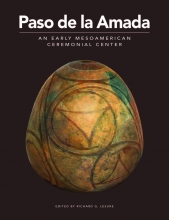From 1,066 individual screened proveniences, 531 were identified as yielding samples of domestic refuse that were (relatively) unmixed chronologically or otherwise of interest for analyses. Based on stratigraphic criteria, the 531 original proveniences were consolidated into the 225 Initial Refuse Samples. For the analysis of rare materials, those were further consolidated into 55 Lumped Refuse Samples. Appendix A lists original minimal proveniences with refuse sample designations and other basic information. Data Record 2.1 (Initial Refuse Samples) is an analyzable spreadsheet with the slightly pruned set of Initial Refuse Samples used in analyses, particularly for Chapters 19 and 25.
The criterion of most interest in selection of proveniences for inclusion among the refuse samples was the degree to which the artifacts they yielded constituted secondary refuse (items collected from their primary contexts of use, dumped in another location, and not subsequently disturbed) as opposed to tertiary refuse (items dumped in one location and subsequently reworked in various ways, potentially including removal to a new location). (See Rosenswig 2009:16; Schiffer 1972). The distinction between tertiary and secondary refuse is a fuzzy one, best envisioned as a continuum in which the question is the degree to which a set of artifacts approximates the ideal of secondary refuse or instead strays toward the mixed, worked-over character of tertiary refuse (Lesure 2014:11).
The Initial Refuse Samples are labeled with a four digit number followed by a letter. The first two digits correspond to the mound in which the sample is located—01 for Mound 1, 32 for Mound 32, and so forth. The first two digits for off-mound deposits are simply 00. The second two digits are identification numbers for each sample. Within each mound excavation, each sample was assigned a unique identification number. Thus Sample 0103 is the third sample from Mound 1, 1203 is the third sample from Mound 12, and so forth. In some instances, effort was made to assign sample codes in accordance with stratigraphy. In other cases, however, that was not feasible or practical, and in general the two-digit sample code should be treated as an arbitrary cataloging device. Thus the fact that Sample 1267 comes after 1251 and before 1272 has no spatial, stratigraphic, or chronological significance for understanding Sample 1267 other than that all three derive from Mound 12. Each sample label ends with a letter (A through E) that identifies the level of analysis of pottery from that unit. The Lumped Refuse Samples are abbreviated mnemonics that note mound and other distinguishing information, such as phase (L = Locona, LL = Late Locona, O = Ocós, C = Cherla), unit number, or feature number.
Selection of refuse samples
Identification of appropriate deposits (those approaching the ideal of secondary refuse) involved an assessment of formation processes based on stratigraphy, the density and size of artifacts, and phase assignments of the ceramics. Stratigraphic observations allowed the identification of occupation surfaces, platforms, pits, erosional features, slope wash, and silted channels. Consideration of the density and size of artifacts allowed occupation surfaces to be distinguished from sheet middens. The contents of pits varied, indicating different depositional processes. Artifact densities were compared based on the volumetric density of sherds (kilograms of sherds per m3). A proxy for sherd size was obtained for each deposit by dividing the weight of sherds by the number of sherds, yielding average sherd weight (g/sherd). Where ceramic analysis reached Level A, another assessment of sherd size was derived from the rim analysis. The rim sherd completeness index is the proportion of rim sherds that constitute 15 percent or more of the original mouth of the vessel, among rim sherds constituting 5 percent or more of the original (after Lesure et al. 2014b:176).
